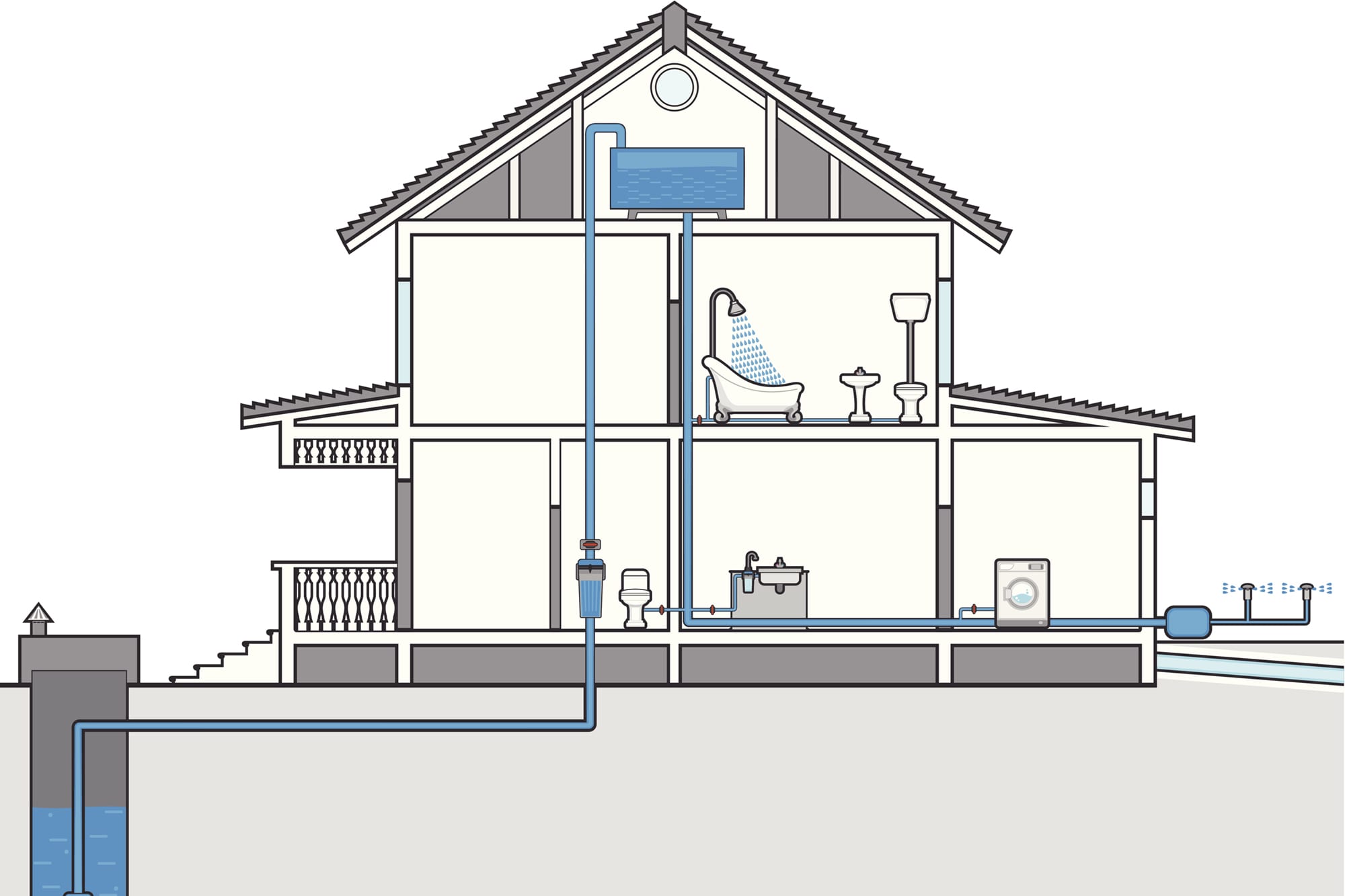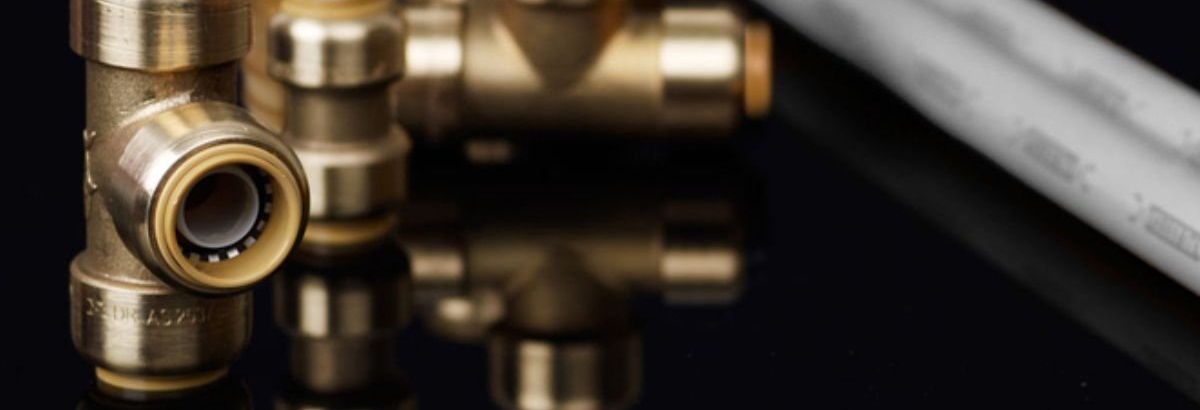This article further down relating to Anatomy of a House: Understanding the Components is exceedingly captivating. Check it out for your own benefit and see what you think of it.

Comprehending how your home's pipes system works is important for every house owner. From providing clean water for drinking, food preparation, and showering to securely eliminating wastewater, a well-maintained plumbing system is critical for your family members's health and wellness and comfort. In this comprehensive overview, we'll check out the elaborate network that makes up your home's pipes and deal suggestions on maintenance, upgrades, and dealing with common concerns.
Introduction
Your home's pipes system is greater than simply a network of pipes; it's an intricate system that ensures you have accessibility to clean water and efficient wastewater elimination. Recognizing its components and just how they collaborate can help you protect against costly repair services and ensure whatever runs efficiently.
Standard Components of a Plumbing System
Pipelines and Tubes
At the heart of your pipes system are the pipes and tubes that bring water throughout your home. These can be constructed from various products such as copper, PVC, or PEX, each with its advantages in regards to durability and cost-effectiveness.
Components: Sinks, Toilets, Showers, and so on.
Fixtures like sinks, commodes, showers, and bathtubs are where water is utilized in your home. Comprehending just how these fixtures attach to the plumbing system aids in detecting issues and intending upgrades.
Valves and Shut-off Factors
Valves control the circulation of water in your pipes system. Shut-off valves are critical throughout emergencies or when you require to make repairs, allowing you to isolate parts of the system without interrupting water circulation to the entire home.
Water System
Main Water Line
The main water line links your home to the local water system or an exclusive well. It's where water enters your home and is dispersed to various components.
Water Meter and Stress Regulatory Authority
The water meter actions your water use, while a stress regulator makes sure that water streams at a risk-free stress throughout your home's pipes system, protecting against damages to pipelines and components.
Cold Water vs. Warm water Lines
Recognizing the difference between cold water lines, which supply water directly from the primary, and hot water lines, which carry heated water from the hot water heater, aids in repairing and preparing for upgrades.
Water drainage System
Drain Pipes Pipeline and Traps
Drain pipes bring wastewater away from sinks, showers, and commodes to the sewage system or septic system. Catches stop drain gases from entering your home and also catch particles that could create obstructions.
Ventilation Pipes
Air flow pipes permit air into the drainage system, avoiding suction that can slow water drainage and cause catches to empty. Correct ventilation is essential for preserving the stability of your pipes system.
Importance of Appropriate Drainage
Making sure appropriate water drainage prevents backups and water damage. On a regular basis cleaning drains and maintaining traps can avoid expensive repair work and extend the life of your pipes system.
Water Furnace
Sorts Of Water Heaters
Water heaters can be tankless or traditional tank-style. Tankless heating systems warm water on demand, while containers keep heated water for prompt usage.
Upgrading Your Pipes System
Factors for Upgrading
Updating to water-efficient fixtures or changing old pipelines can improve water high quality, reduce water expenses, and boost the value of your home.
Modern Pipes Technologies and Their Advantages
Discover modern technologies like smart leak detectors, water-saving bathrooms, and energy-efficient hot water heater that can save cash and lower ecological influence.
Expense Factors To Consider and ROI
Calculate the upfront prices versus long-term savings when taking into consideration pipes upgrades. Several upgrades spend for themselves via reduced utility costs and less fixings.
How Water Heaters Attach to the Pipes System
Recognizing how water heaters connect to both the cold water supply and hot water distribution lines aids in identifying issues like insufficient warm water or leakages.
Maintenance Tips for Water Heaters
On a regular basis purging your water heater to remove sediment, examining the temperature level settings, and examining for leakages can expand its life expectancy and improve energy performance.
Typical Plumbing Issues
Leakages and Their Reasons
Leaks can take place due to aging pipelines, loosened installations, or high water pressure. Dealing with leaks immediately avoids water damages and mold and mildew development.
Clogs and Blockages
Clogs in drains pipes and commodes are commonly triggered by flushing non-flushable things or a build-up of oil and hair. Using drainpipe displays and bearing in mind what goes down your drains pipes can protect against clogs.
Signs of Plumbing Problems to Watch For
Low tide stress, sluggish drains pipes, foul odors, or uncommonly high water expenses are signs of prospective plumbing troubles that must be dealt with quickly.
Plumbing Maintenance Tips
Regular Inspections and Checks
Schedule annual plumbing evaluations to capture problems early. Try to find indicators of leakages, deterioration, or mineral build-up in taps and showerheads.
Do It Yourself Upkeep Tasks
Easy tasks like cleaning faucet aerators, checking for toilet leaks using dye tablets, or insulating exposed pipes in cold climates can prevent major plumbing problems.
When to Call an Expert Plumbing Technician
Know when a plumbing problem needs expert know-how. Trying intricate repair services without appropriate knowledge can bring about even more damages and higher repair work costs.
Tips for Lowering Water Use
Basic practices like repairing leaks immediately, taking shorter showers, and running full tons of laundry and dishes can conserve water and reduced your energy expenses.
Eco-Friendly Pipes Options
Consider lasting plumbing materials like bamboo for floor covering, which is durable and green, or recycled glass for counter tops.
Emergency Preparedness
Actions to Take During a Pipes Emergency situation
Know where your shut-off valves lie and exactly how to turn off the water supply in case of a ruptured pipe or significant leak.
Importance of Having Emergency Situation Get In Touches With Convenient
Keep call info for local plumbing professionals or emergency solutions easily offered for quick response throughout a plumbing crisis.
Environmental Influence and Preservation
Water-Saving Components and Home Appliances
Mounting low-flow faucets, showerheads, and toilets can significantly reduce water use without compromising efficiency.
Do It Yourself Emergency Situation Fixes (When Applicable).
Temporary solutions like making use of duct tape to spot a dripping pipeline or putting a container under a dripping faucet can reduce damage until a professional plumbing professional shows up.
Conclusion.
Understanding the anatomy of your home's pipes system encourages you to keep it successfully, saving money and time on repair services. By complying with regular upkeep regimens and staying informed concerning contemporary plumbing modern technologies, you can ensure your plumbing system runs effectively for many years to come.
HOW YOUR PLUMBING SYSTEM WORKS
Which Pipes Do What?
Blue lines = fresh water supply entering the building Red lines = hot water supply entering the building Grey lines = pipes carrying waste away from the building and venting pipes carrying gases away from the building (through the roof) YOUR MAIN PLUMBING SYSTEMS
There are two main plumbing systems that support your home s basic plumbing needs one that brings clean water into your home, and one that sends dirty water away from your home. Connected to the toilet, bath, shower, and other faucets in your home, these two systems keep your water flowing in the right directions.
ACCESSING FRESH WATER
Fresh and clean water is brought into your home through the main water supply line . Filtered through one pipe, this water is pressured to flow into the various fixtures in your home at any given time.
This water can be sourced from a well located on your property, a pond or river (mostly cottages), or, as in most cases, from the city s municipal water treatment centre. However, it is important to note that water that is untreated, such as the water siphoned from ponds or rivers, may not be safe to drink. Personal water supplies always need to be treated for hardness and contaminants before consumed.
MUNICIPAL WATER SUPPLIES
Improve taste and odour Remove sediment Eliminate hardness Reduce chlorine COLD WATER SUPPLY VS. HOT WATER SUPPLY
Cold water flows into your home or building through the service line, which then distributes hot or cold water to your fixtures. This line is most commonly run through a central column that runs floor to floor. Hot water runs in short and straight pipes as the longer the pipeline, the more heat that will be lost in the transfer. Having shorter pipes also allows residents to access hot water more quickly.
WASTE WATER SYSTEM
Your wastewater system is divided into two parts pipes that send wastewater away from your home and venting pipes that send sewer gas away from your home. Sewage water travels through pipes that flush the water and waste towards local sewers that are operated and managed by your city or town. Most sewer systems rely on gravity to move the wastewater to where it needs to go.
The further away from your toilet or sink, the larger wastewater pipes become. This allows for waste to be disposed of from various parts of your home or business at once without pipe blockages. The angle and flow of these pipes are also essential for keeping your waste pipes clear of build up.
https://harrisplumbing.ca/how-your-home-plumbing-system-works/

I am just very focused on Exploring Your Homes Plumbing Anatomy and I really hope you enjoyed reading the entry. If you liked our post kindly be sure to pass it around. Thanks so much for your time spent reading it.
Click Here